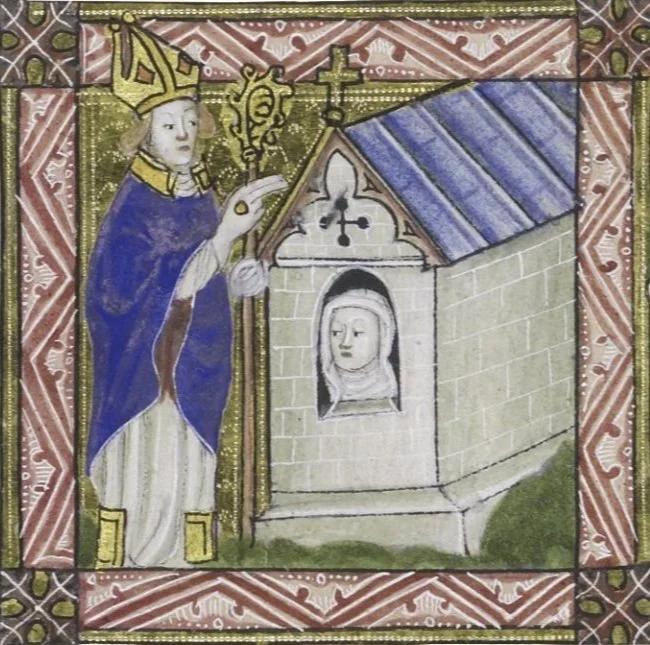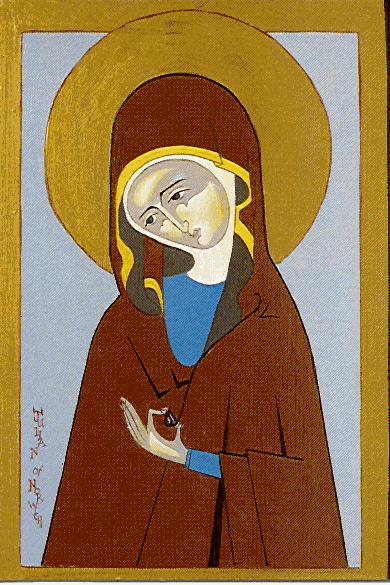HAZELNUT ROAD
Hazelnut Road: Vows of Stability, Acts of Mobility is a long-form, multimedia slow performance project which considers women religious whose voices flourished in societies that in many respects silenced them. Hazelnut Road projects their voices over the canon wall, alternating between extreme stillness in "anchorholds" (in Istanbul, Milan, Disibodenberg, Norwich, Lima...) and extreme movement through pilgrimages on foot wherever possible between the “truth-spots” of each woman's historical home turf. Hazelnut Road engages medieval manuscripts, Byzantine notation, ancient maps and illuminations, bespoke audio processing patches and more to evoke these women’s worlds through inventive performance of song and word. Kassia of Byzantium (9th century); Hildegard von Bingen (12th century); Birgitta of Sweden and Julian of Norwich (both 14th century); Margery Kempe (15th century); 17th-century women such as Juana Inés de la Cruz (Mexico), Úrsula de Jesús (Peru) and nun composers of northern Italy (including Lucrezia Orsina Vizzana, Alba Tressina, Rosa Giacinta Badalla, Bianca Maria Meda, Claudia Sessa, and Isabella Leonarda); the modern saint Edith Stein (20th century) and contemporary composer Emahoy Tsegué-Maryam Guèbrou (Ethiopian, 1923-2023) gently collide in these imagined dialogues, exposing fresh resonances between their lives and works. The result is a moving and moveable performance piece that (re)sounds their vibrant contributions both by embodying their contemplative silence and incanting their words and melodies.
Hazelnut Road is currently winding through Greece and Turkey where I am a 2022-23 Fulbright Fellow exploring the life and works of 9th-century hymnographer Kassia/St. Kassiani.
From the anchoress Julian of Norwich’s vision comes the title for my project. Julian writes: “God showed me a little thing the size of a hazelnut, [and told me] ‘It is all that is made.’ I marveled that it could last, for I thought it might suddenly have fallen to naught for its smallness.”*
Often, the entire material evidence for women’s voices appears as small as Julian’s hazelnut, but can also prove as infinitely yielding of knowledge about our collective past and present. I am following Julian’s insight. By loving these women’s works, we eternalize them.
*Adapted from the Grace Warrack translation of Revelations of Divine Love, 1901
Holy Housewife
Margery Kempe dresses in white and departs England for Jerusalem. Along the way she spends a week at Kassia’s monastery on the 7th Hill of Constantinople. Margery shares her stories as a dutiful housewife and mother cum devout pilgrim. Margery confesses she stands accused of “impersonating” a nun. Kassia teaches Margery her new hymn: Lord, the Woman Fallen Into Many Sins.
HILDEGARD VON BINGEN
Vision
Hildegard von Bingen embarks on a preaching tour beyond her native Rheinland, paying a visit to Julian of Norwich’s tiny anchorhold cell in Norwich, England. They share with each other their visions in word and song and praise each other for writing them down, whether the texts are published to great acclaim or must remain hidden from authorities.
JULIAN OF NORWICH
Awakening
Anchoress Julian of Norwich (England) addresses an epistle describing her latest revelation to African Peruvian mystic Ursula de Jesus. The two correspond about physical and mental suffering, illness, near-death experiences and the daily work of serving others as intercessor and spiritual guide.



